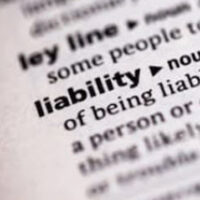How To Prove That A Property Owner Knew About A Dangerous Condition That Caused Your Injury?

When it comes to pursuing compensation for injuries that occur on someone else’s property, the injured party must prove that the property owner was negligent.
In most slip and fall cases case, the injured person must be able to demonstrate evidence proving that the owner of the property:
- failed to take reasonable measures to maintain the premises in a safe condition; and
- knew or should have known about the dangerous condition that caused the plaintiff’s injury.
Proving these two elements can be difficult if you do not have a Manchester slip and fall accident attorney on your side.
Elements to Prove That a Property Owner Knew About a Dangerous Condition
It is not uncommon for property owners to dispute a premises liability claim filed against them by injured visitors by arguing that they were not aware of the dangerous condition.
For this reason, if you were injured due to an unsafe condition on someone else’s property, you need to gather sufficient evidence to prove the following elements:
- The dangerous condition, which caused your injury, existed on the owner’s property;
- The owner had notice of the condition;
- The owner owed you a duty of care (you were not trespassing at the time of the incident);
- The duty was breached due to the owner’s failure to maintain the property in a safe condition; and
- You suffered injuries and damages as a result of the owner’s negligence.
If your lawyer can establish these five elements, you can hold the negligent property owner liable for your damages, including:
- Medical expenses
- Lost wages
- Loss of enjoyment of life
- Pain and suffering
- Emotional distress
- Disability
- And many more
What is Actual and Constructive Knowledge in Premises Liability Cases?
In the context of premises liability cases, the term “knowledge” refers to the owner’s awareness of the dangerous condition that caused an injured party’s injury. There are two types of knowledge under premises liability law:
- Actual knowledge. An owner has actual knowledge when he or she actually knows of the dangerous condition on their property and has a duty to warn visitors of the danger.
- Constructive knowledge. An owner has constructive knowledge of a hazardous condition when he or she is reasonably expected to know about the danger. Property owners are responsible for inspecting their premises and discovering hazards that present a risk of harm to others.
When recovering damages for your slip and fall injury, actual or constructive knowledge can form the basis for liability.
How to Prove Actual or Constructive Knowledge?
If you are injured on someone else’s property (residential or commercial), you will have to prove that the owner had actual or constructive knowledge of the condition that caused your injury to be entitled to compensation.
But what evidence do you need to prove that a property owner knew or should have known about a dangerous condition? It is essential to seek the legal counsel of a skilled lawyer to help you gather the following types of evidence:
- Photos and videos at the scene of your slip and fall accident
- Surveillance camera footage
- Witness statements
- The accident report
These and many other types of evidence can help you pursue a successful premises liability claim to obtain compensation for your slip and fall injury in New Hampshire.
Schedule a case review with our attorneys at the Law Office of Manning Zimmerman & Oliveira PLLC in Manchester to discuss your particular case. Call 603-624-7200 today.

